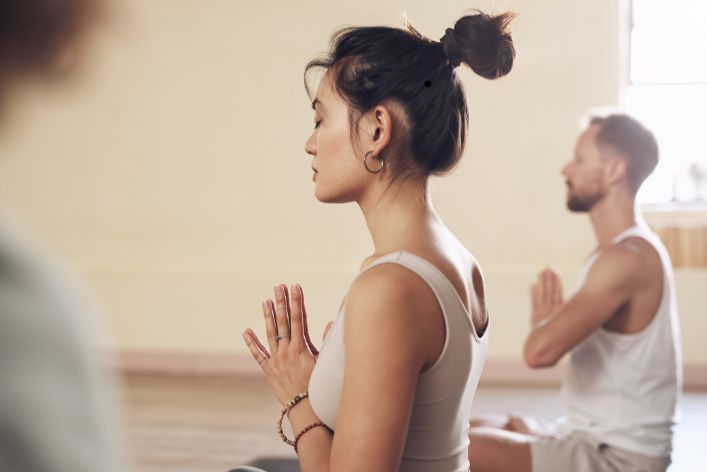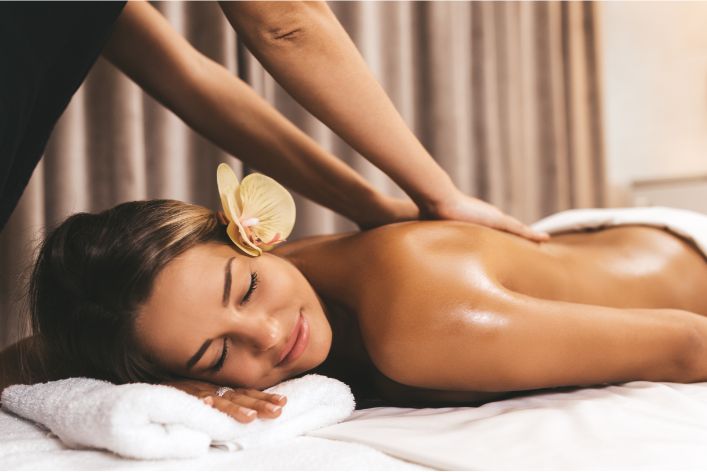Last Updated on May 28, 2023
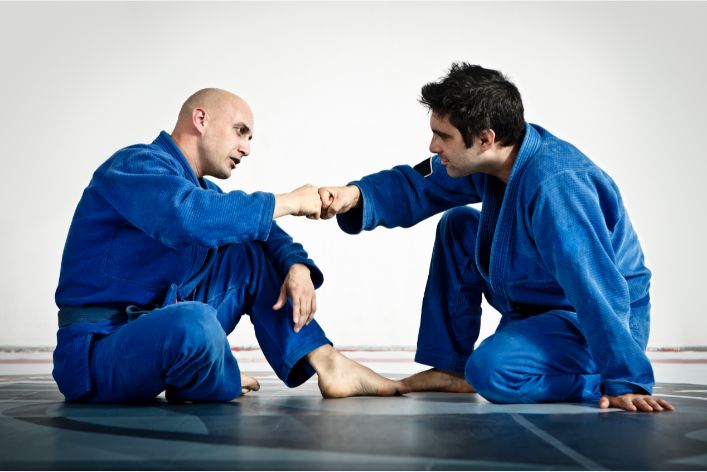
When it comes to jiu jitsu training and competition, having the right gear is crucial to success. Not only does it help to enhance performance, but it also provides protection and support to prevent injuries. In this post, we’ll be covering some of the essential gear items that every jiu jitsu practitioner should have in their arsenal.
1. Gi
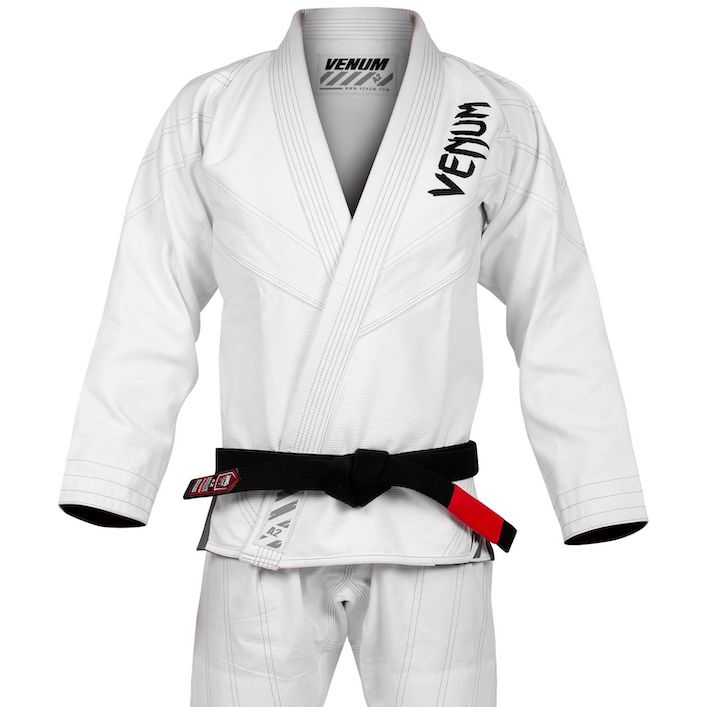
When it comes to jiu jitsu training and competition, having the right gear is crucial for success and safety. One of the most essential pieces of gear is the gi.
What is a gi and why is it necessary for jiu jitsu?
A gi is a traditional Japanese uniform worn in martial arts that consists of a jacket and pants made of heavy cotton. In jiu jitsu, the gi serves several purposes:
- Provides grip for techniques such as chokes and holds
- Allows for safer training by creating a barrier between the skin
- Helps regulate body temperature during training and competition
Tips on choosing the right gi
When choosing a gi, there are several factors to consider:
- Material: Look for gi’s made from high-quality, durable materials such as cotton or hemp.
- Fit: Make sure the gi fits properly to allow for freedom of movement while also being snug enough to prevent snagging on clothing or fingers.
- Weight: Consider the weight of the gi, as a heavy gi can be beneficial for training grip strength but can also cause fatigue during long training sessions.
- Design: Choose a gi that reflects your personal style and personality, but also adheres to any rules and regulations set forth by your gym or competition.
Specific types of gis and their pros and cons
There are several types of gis available, each with their own pros and cons:
- Single weave: Lightweight and durable, single weave gis are a great option for beginners and those who prefer a lighter gi. However, they may not hold up as well over time compared to heavier gis.
- Double weave: As the name suggests, double weave gis are made with two layers of fabric, making them thicker and more durable than single weave gis. However, they can be heavier and less breathable than lighter gis.
- Gold weave: A mix between single and double weave gis, Gold weave gis are made with a tighter weave and are known for their durability and comfort. However, they can also be more expensive than other types of gis.
- Ripstop: Made with a special ripstop fabric, these gis are extremely lightweight and great for travel or hot weather training. However, they may not hold up as well as heavier gis during intense training and competition.
The gi is an essential piece of gear for jiu jitsu training and competition. By choosing the right gi that is made from high-quality materials, fits properly, and meets any regulations set forth by your gym or competition, you can train and compete with confidence and comfort.
Read: Jiu Jitsu vs. Other Martial Arts: What Sets It Apart?
2. Rashguard
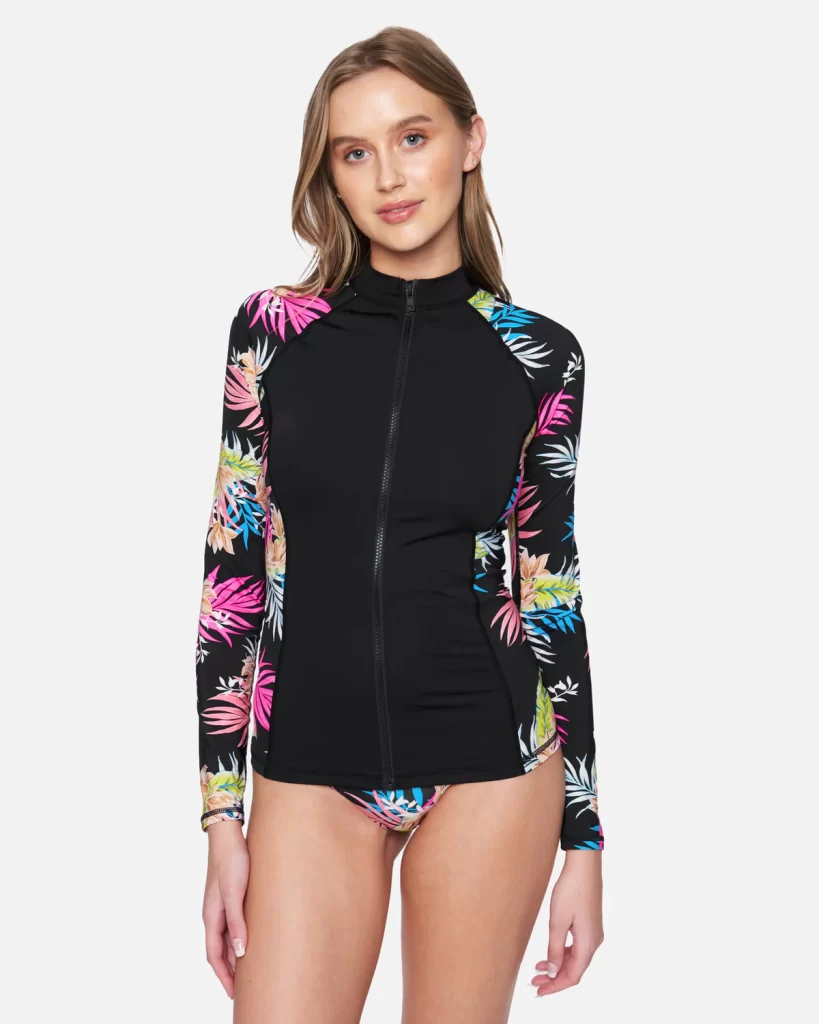
A rashguard is an essential piece of gear in jiu jitsu training and competition. It is a form-fitting shirt made of quick-drying and stretchy material that covers the upper body. Here are some reasons why a rashguard is important:
- Prevents skin irritation and mat burns
- Reduces the risk of infection by creating a barrier between the skin and mat
- Regulates body temperature by wicking away sweat
- Provides compression to support muscles and improve circulation
When choosing a rashguard, there are a few things to consider:
- Material – Look for a rashguard made of breathable and moisture-wicking fabric like polyester, spandex, or a blend of both. Avoid cotton, which absorbs sweat and takes longer to dry.
- Fit – Make sure the rashguard is snug but not too tight. It should allow freedom of movement without bunching or riding up.
There are different types of rashguards available, each with their own advantages and disadvantages. Here are a few:
- Long-sleeved rashguards – Provide full coverage and protection for arms. Can be hot during training in warmer weather.
- Short-sleeved rashguards – More breathable and cooler than long-sleeved. Allow for more freedom of movement in the arms.
- Compression rashguards – Provide extra compression and support for muscles. May feel restrictive for some people.
- Loose fit rashguards – Allow for more ventilation and a relaxed fit. Do not provide as much compression or protection from mat burns compared to form-fitting rashguards.
The type of rashguard you choose depends on your personal preference and training needs. Some people may prefer a long-sleeved compression rashguard for added support and protection, while others may opt for a short-sleeved loose fit rashguard for more ventilation and comfort.
Regardless of the type of rashguard you choose, make sure to wash it after each use to prevent bacteria buildup and odors. Hang dry or lay flat to avoid shrinking or stretching out of shape.
A rashguard is a crucial piece of gear for jiu jitsu training and competition. It provides protection, support, and comfort during intense grappling sessions. By choosing the right material and fit, you can maximize the benefits of wearing a rashguard and improve your overall performance.
Read: The Benefits of Jiu Jitsu for Mental and Physical Health
3. Shorts
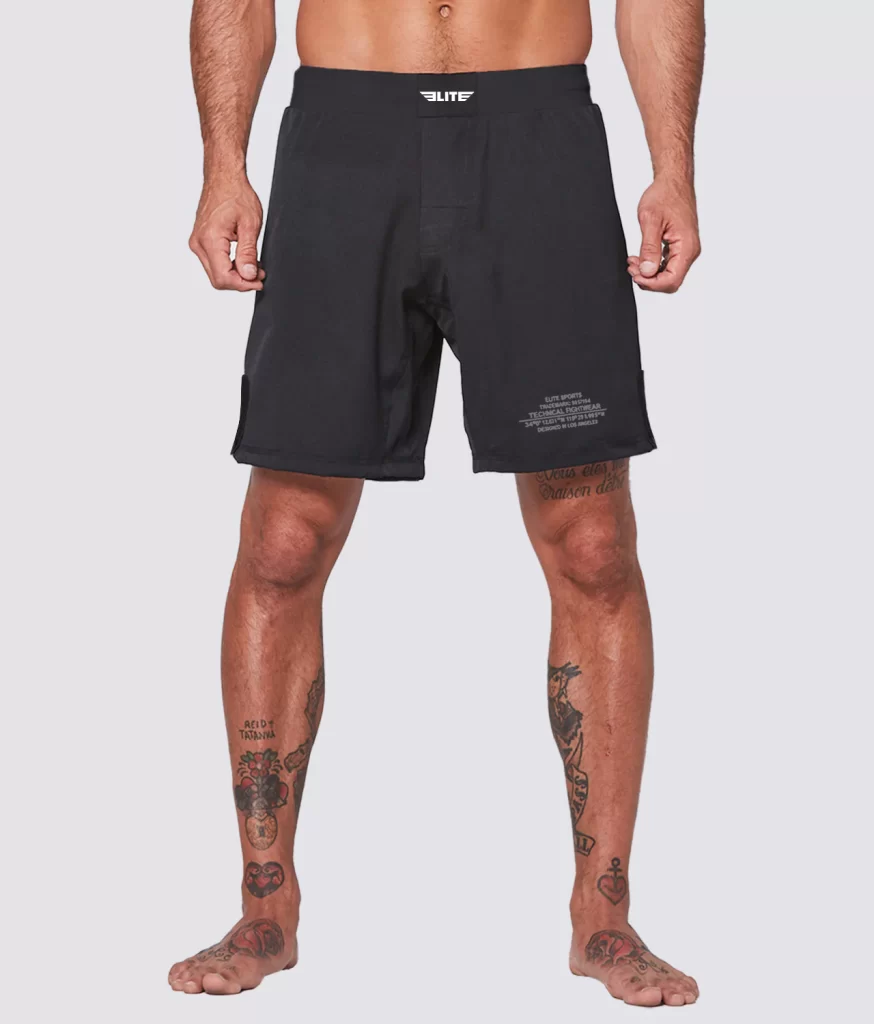
Shorts are a crucial piece of gear in jiu jitsu training and competition. They provide comfort, flexibility, and allow for a wider range of motion during practice and bouts.
Choosing the Right Shorts
When selecting shorts for jiu jitsu, it is important to consider material and fit. Opt for materials that are lightweight and breathable, such as polyester or a blend of polyester and spandex. These materials wick away sweat and allow for mobility.
The fit of your shorts should also be a top priority. Look for shorts that are snug but not too tight, allowing you to move freely without restriction. It is also important to choose shorts that have a secure waistband, such as a drawstring or elastic band.
Types of Shorts and Their Pros and Cons
Board Shorts
- Pros: Board shorts are lightweight and provide a wide range of motion.
- Cons: Some board shorts have a loose fit, which can be a hindrance during grappling.
Fight Shorts
- Pros: Fight shorts are specifically designed for combat sports and are often made with durable materials.
- Cons: These shorts can be more expensive than other options.
MMA Shorts
- Pros: MMA shorts tend to be made with a blend of polyester and spandex, which is perfect for jiu jitsu.
- Cons: The shorter length of MMA shorts may not be suitable for some individuals.
Compression Shorts
- Pros: Compression shorts can improve blood flow and provide added support.
- Cons: These shorts do not offer the same level of protection as other options.
Tips for Caring for Your Jiu Jitsu Shorts
To get the most out of your shorts, it is important to properly care for them. Wash them after each use to prevent bacteria buildup and avoid using fabric softeners, which can break down the material. Hang dry your shorts, as the heat from a dryer can cause shrinkage and damage to the fabric.
When it comes to jiu jitsu, having the right gear can make all the difference in your performance. Choosing the right shorts can provide the necessary mobility and comfort needed during training and competition. By considering the material, fit, and style, you can find shorts that meet your specific needs and enhance your experience in this dynamic martial art.
Read: How to Choose the Right Jiu Jitsu Academy for You
4. Mouthguard

When it comes to training and competing in Jiu Jitsu, having the right gear is essential. Among the items that every practitioner should have is a mouthguard. Not only is it a requirement in most competitions, but it also helps protect your teeth and minimize the risk of injury during training.
Importance of Wearing a Mouthguard in Jiu Jitsu
Jiu Jitsu is a sport that involves a lot of grappling and close contact with your opponent. While this is part of what makes the sport so exciting, it also puts your teeth at risk. A mouthguard can help absorb the impact of a blow to the mouth, preventing chipped or broken teeth, or even a broken jaw.
Moreover, wearing a mouthguard can minimize the risk of concussion. The force of a blow to the face can travel up the jaw and affect the brain, causing a concussion. A mouthguard can reduce the force of the impact and help protect your head.
Tips for Choosing the Right Mouthguard
When it comes to selecting a mouthguard for Jiu Jitsu, there are a few things to consider. First, you want to make sure that it fits well. A poorly fitting mouthguard can be uncomfortable and even make it difficult to breathe, which can be dangerous during a match.
There are two main types of mouthguards: boil-and-bite and custom-fit. Boil-and-bite mouthguards are made from a thermoplastic material that softens in hot water. After softening, you bite into the material to make an impression of your teeth. While these mouthguards are more affordable, they can feel bulky and may come loose during a match.
Custom-fit mouthguards are made from a mold of your teeth, ensuring a precise fit. These mouthguards are more expensive but offer better protection and comfort. They are also less likely to come loose during intense grappling.
The material of the mouthguard is also a consideration. Mouthguards can be made from various materials, including rubber, silicone, and latex-free vinyl. Rubber mouthguards are comfortable and affordable but wear out quickly. Silicone and vinyl mouthguards are more durable and offer better protection, but they can be more expensive.
Types of Mouthguards and Their Pros and Cons
There are three main types of mouthguards: single-layer, double-layer, and triple-layer. Each type has its own advantages and disadvantages.
- Single-layer: These mouthguards are the most affordable and lightweight. They provide basic protection but may not be sufficient for more vigorous Jiu Jitsu sessions.
- Double-layer: These mouthguards have an extra layer of protection, offering better cushioning than single-layer models. They are also more durable and can last for a season or longer.
- Triple-layer: These mouthguards offer the most protection, thanks to their additional layer of shock-absorbing material. However, they can be bulky and uncomfortable, making it difficult to breathe or speak.
Another option is the flavored mouthguard, which adds a fun twist to a typically uncomfortable piece of gear. Flavored mouthguards are made from either natural or artificial flavors and are usually sugar-free. They can make wearing a mouthguard more enjoyable and can be a good option for younger athletes.
A mouthguard is an essential piece of gear for Jiu Jitsu practitioners. It not only protects your teeth but also minimizes the risk of concussion and other injuries. When selecting a mouthguard, it’s important to consider the fit and material, as well as the level of protection you need. By choosing the right mouthguard, you can feel confident and safe while training and competing.
Read: Understanding Jiu Jitsu Belts and Ranking System
5. Knee Pads
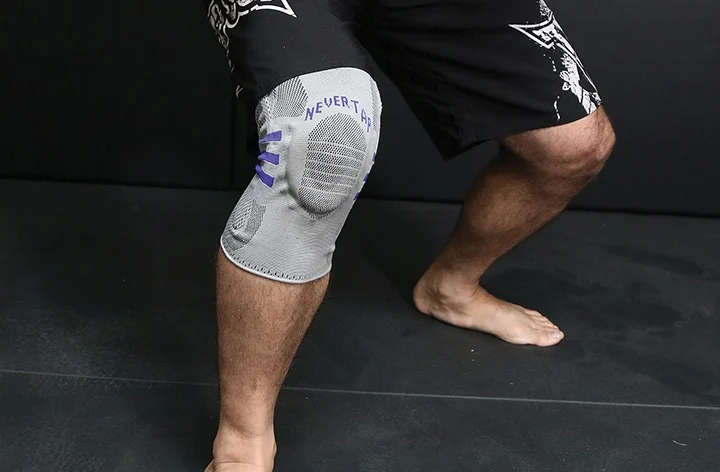
Knee pads can be helpful in jiu-jitsu training and competition because they provide extra protection to your knees. Many jiu-jitsu techniques require kneeling, which can be tough on your joints over time.
When choosing knee pads, consider the material and fit. A good pair should be comfortable, non-slip, and not restrict movement. Look for ones made from durable materials that won’t tear easily.
There are two main types of knee pads: sleeve and strap. Sleeve knee pads slide over your knee and are secured with elastic. Strap pads have adjustable straps that wrap around your knee to hold the pad in place.
Sleeve Knee Pads
- Pros:
- Lightweight and comfortable
- Easy to put on and take off
- Don’t slide around as much as strap pads
- Lightweight and comfortable
- Cons:
- Can be difficult to get the right fit
- May slide down during intense training or sparring
- Can bunch up behind the knee and restrict movement
- Can be difficult to get the right fit
Strap Knee Pads
- Pros:
- Adjustable fit for better support
- Less likely to slide down during training or sparring
- Can be worn over or under gi pants
- Adjustable fit for better support
- Cons:
- Can be bulky and not as comfortable
- May require readjustment during training or sparring
- Metal or plastic buckles may dig into the skin
- Can be bulky and not as comfortable
In addition to sleeve and strap knee pads, there are also hybrid options that combine the best of both worlds. These typically have a sleeve base with adjustable straps for a customized fit.
Basically, knee pads can be a valuable investment for jiu-jitsu practitioners. They provide additional knee support and help reduce the risk of injury during training or competition. Whether you choose sleeve, strap, or hybrid pads, make sure they fit well and are made from durable materials to ensure long-lasting use.
Read: Tips for Improving Your Jiu Jitsu Game Faster
6. Headgear
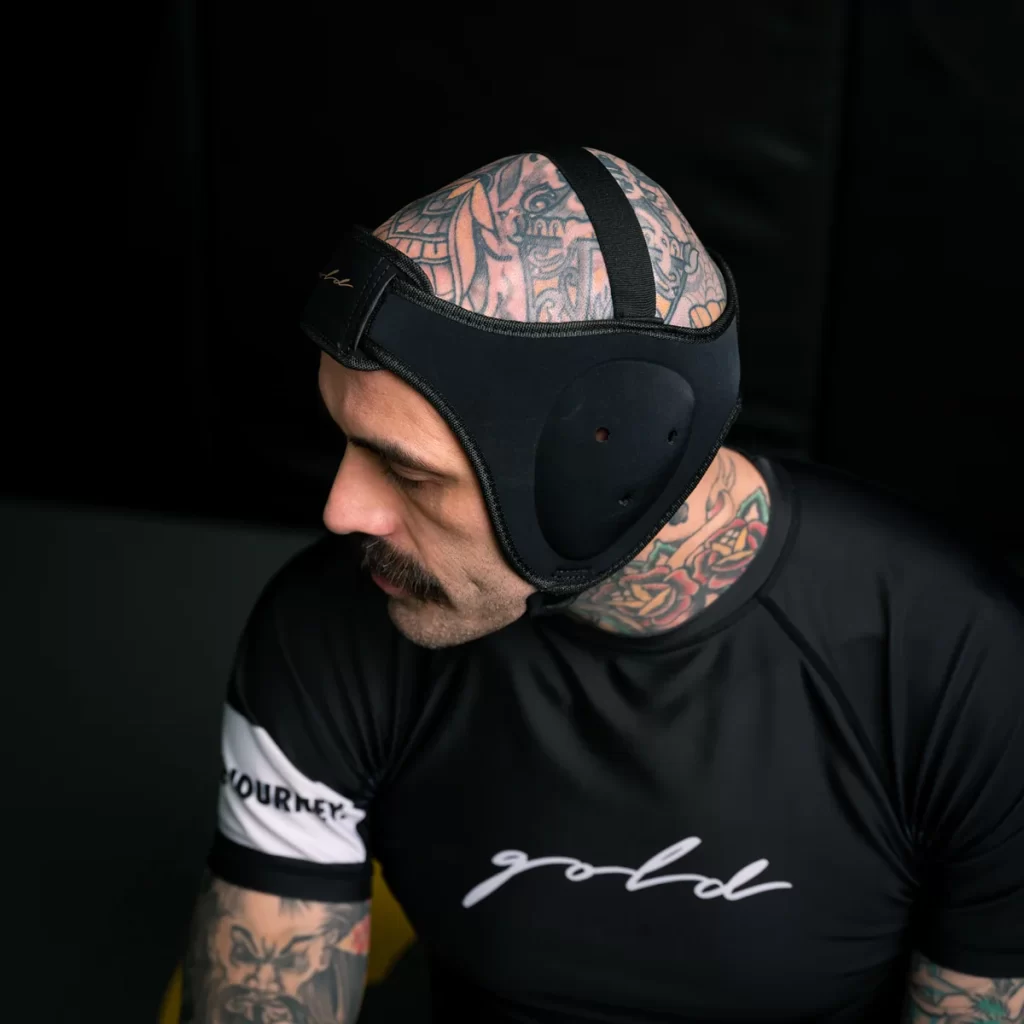
One of the essential gears for jiu-jitsu training and competition is headgear. While it is not mandatory in most competitions, it can be helpful, especially for beginners. Here are some reasons why you might want to consider wearing headgear during your jiu-jitsu practice or competition:
1. Protection against head injuries
One of the main reasons why headgear is essential in jiu-jitsu is to protect your head from injuries. Although jiu-jitsu is a relatively safe sport, accidents do happen, and head injuries can be dangerous. Headgear will help to absorb some of the impact from falls or hits to your head and reduce the risk of injuries.
2. Better hearing
Headgear can also help to improve your hearing during training and competition. In a noisy gym or a crowded arena, it can be challenging to hear your coach or the referee. Wearing headgear will help to block out some of the external noise and allow you to focus better.
3. Preventing cauliflower ear
Cauliflower ear is a common injury among jiu-jitsu enthusiasts. It is caused by repeated trauma to the ear, which causes the cartilage to get damaged and swollen, leading to a deformity. Wearing headgear can help to prevent this injury by reducing the impact of hits and falls to the ear.
Choosing the Right Headgear
When choosing headgear for jiu-jitsu, there are several factors to consider, including the material and fit. Here are some tips on how to choose the right headgear for you:
- Material: Headgear can be made from various materials, including synthetic leather, neoprene, and foam. Look for a material that is durable, comfortable, and breathable.
- Fit: The headgear should fit snugly but should not be too tight or too loose. It should cover your ears and forehead and not obstruct your vision.
Read: The History and Evolution of Brazilian Jiu Jitsu
Types of Headgear and Their Pros and Cons
Several types of headgear are available for jiu-jitsu practitioners, each with pros and cons. Here are some of the most common types:
- Wrestling Headgear: Wrestling headgear is a popular choice for jiu-jitsu practitioners. It is lightweight, durable, and provides excellent protection for the ears. However, it can be uncomfortable to wear for prolonged periods due to its rigid design.
- Boxing Headgear: Boxing headgear is another option for jiu-jitsu practitioners. It offers more protection than wrestling headgear, covering the cheeks, chin, and forehead. However, it can be bulky and restrict your vision.
- MMA Headgear: MMA headgear is designed for mixed martial arts but can also be used in jiu-jitsu. It offers good coverage for the head and ears and allows for more mobility than other types of headgear. However, it may not be as durable as other types and can be more expensive.
Headgear is an essential piece of equipment in jiu-jitsu training and competition. It can help to protect against head injuries, improve hearing, and prevent cauliflower ear. When choosing headgear, consider the material and fit, and choose the type that best suits your needs. With the right headgear, you can enjoy safer and more productive jiu-jitsu practice and competition.
ReadHow to Get Started with Jiu Jitsu: A Beginner’s Guide
Conclusion
The essential gear items for jiu jitsu training and competition include a gi, rash guard, spats, mouthguard, and tape.
Investing in high-quality gear is crucial for optimal performance and safety in jiu jitsu. A good gi should be made from durable material that fits well, while rash guards and spats should be moisture-wicking and flexible.
A mouthguard will protect your teeth and jaw from impact, and tape can provide extra support to joints and prevent injuries.
Remember, your gear is an investment in your training and competition. Don’t skimp on quality to save a few dollars.
We invite readers to share their own experiences and preferences in jiu jitsu gear, as the community can always benefit from learning from one another.
Read: How Do Sumo Wrestlers Maintain Their Weight?
Before You Go…
Hey, thank you for reading this blog to the end. I hope it was helpful. Let me tell you a little bit about Nicholas Idoko Technologies. We help businesses and companies build an online presence by developing web, mobile, desktop, and blockchain applications.
We also help aspiring software developers and programmers learn the skills they need to have a successful career. Take your first step to becoming a programming boss by joining our Learn To Code academy today!
Be sure to contact us if you need more information or have any questions! We are readily available.










